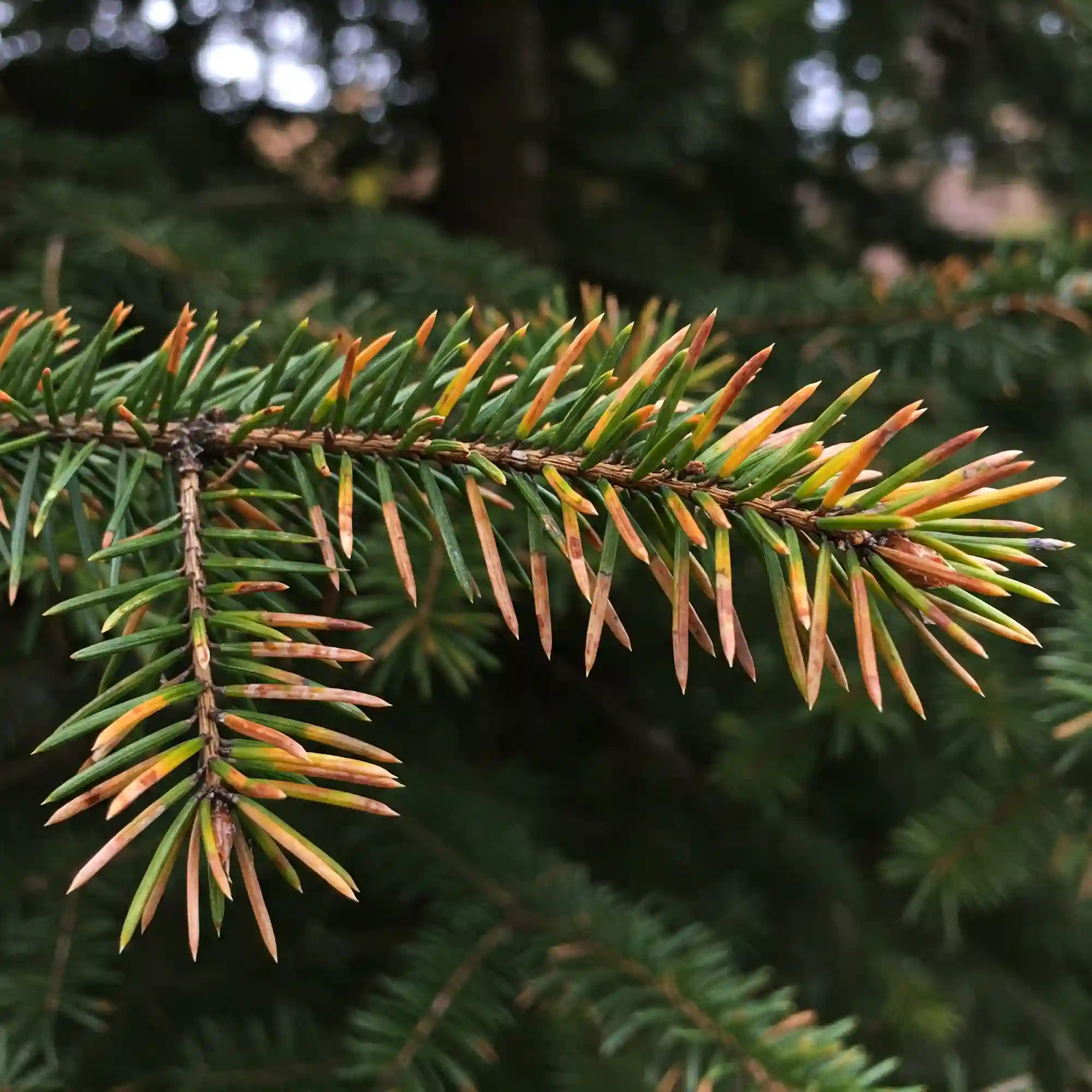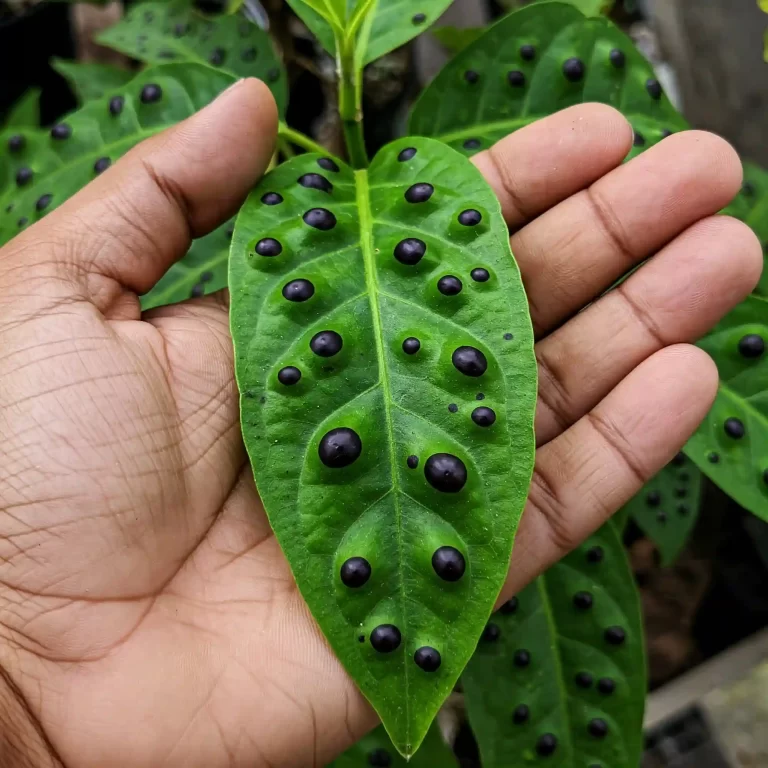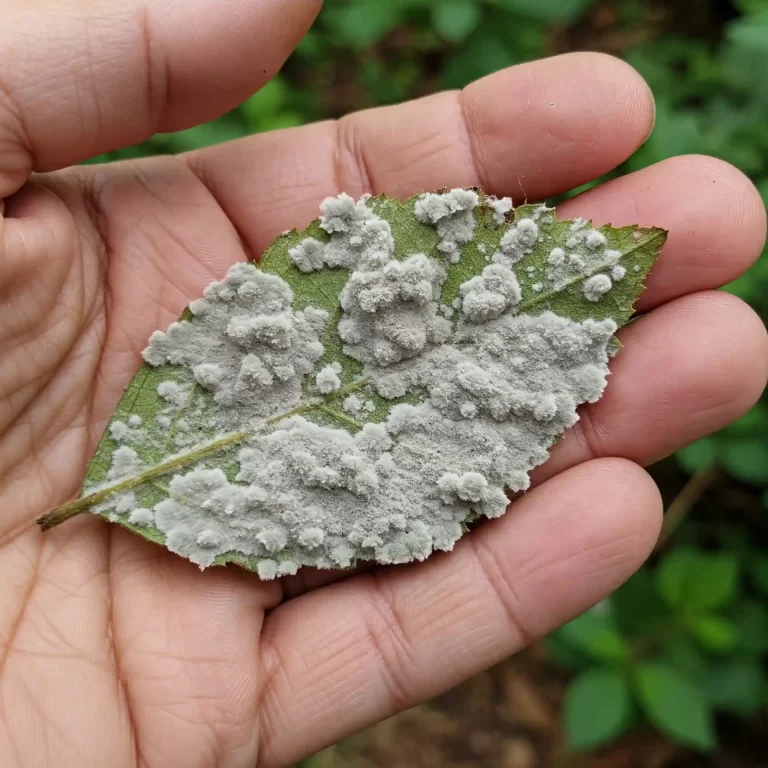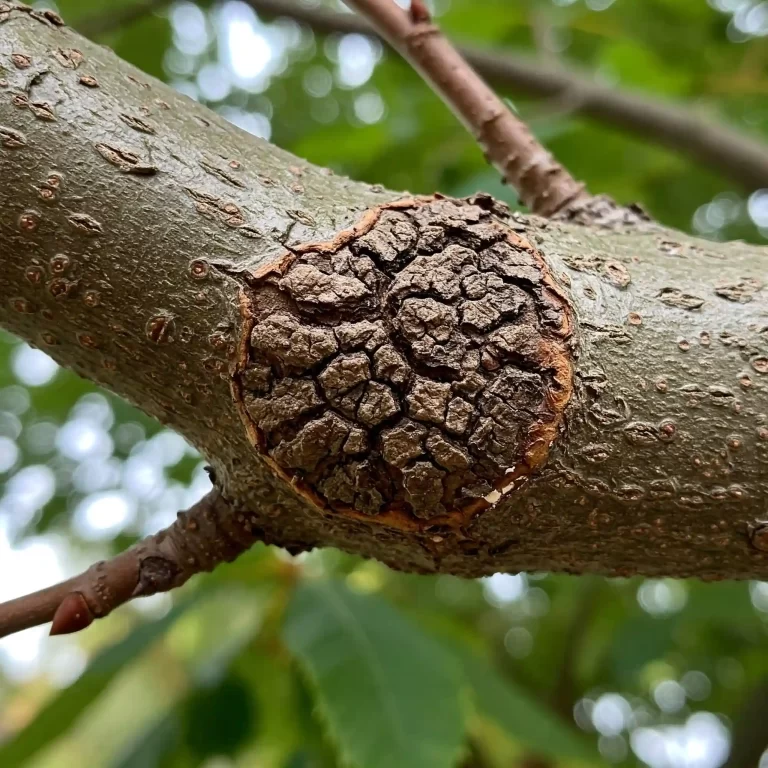What is Cercospora Needle Blight?
Have you noticed your once vibrant conifers turning a sickly shade of brown or shedding needles like it’s autumn in July? It’s unsettling, isn’t it? You invest time and care into your garden, and then this happens. You’re not alone. I’ve seen countless gardeners face the frustration of watching their beautiful evergreens deteriorate. It feels like a betrayal, doesn’t it? Like something you’ve nurtured is suddenly turning against you. But there’s hope. You can combat this. Let’s delve into understanding Cercospora needle blight, so you can take back control of your garden.
Cercospora needle blight is a fungal disease that primarily targets conifers. You’ll find that it’s caused by a specific fungus, Mycosphaerella dearnessii, which thrives in environments where humidity is high, and air circulation is poor. This is crucial for you to understand, as it gives you a starting point for preventative measures. When I say it thrives, I mean it; this fungus is remarkably well-adapted to these conditions. The spores, microscopic and easily spread by wind and water, find their way onto your trees and begin their insidious work. The fungus infects the needles, disrupting their ability to photosynthesize, which is how your trees make their food. The result? Discoloration, needle drop, and a general decline in the tree’s health.
Think of it like this: your conifers are like a well-oiled machine, and Cercospora needle blight throws sand into the gears. The needles, which are essentially the tree’s solar panels, are compromised, and the whole system starts to break down. You might be wondering, “Why my garden?” Well, it’s not a matter of personal affront. Often, it’s a combination of environmental factors and, sometimes, the inherent susceptibility of certain conifer species. I’ve seen it hit pines, spruces, and firs with varying degrees of severity.
To give you a clearer picture, it’s worth noting that the fungus produces spores that are spread by wind and rain. This means that once one tree is infected, others nearby are at risk. It’s like a domino effect. The spores land on the needles, germinate, and penetrate the tissue, causing lesions and eventually leading to the characteristic needle drop. You might also find that the severity of the infection can vary depending on the specific conifer species and the environmental conditions. For instance, young trees and those under stress are particularly vulnerable.
Here’s a table to help you understand the common conifers affected:
| Conifer Type | Susceptibility | Notes |
| Scots Pine | Moderate to High | Especially vulnerable in humid climates |
| Austrian Pine | High | Known for severe infections |
| Eastern White Pine | Moderate | Can be affected, especially young trees |
| Spruce (Various Species) | Moderate | Varies by species, but generally susceptible |
| Fir (Various Species) | Moderate | Similar susceptibility to spruce |
You’ll notice that some conifers are more prone to this disease than others. This isn’t to say that you should avoid planting these species, but rather that you should be extra vigilant if you have them in your garden.
I remember a client of mine, a passionate gardener, who was devastated when his prized Austrian pines started showing signs of needle blight. He had meticulously cared for them, but the humid summer provided the perfect conditions for the fungus to thrive. We worked together to prune the infected branches, apply fungicides, and improve air circulation. It was a long process, but eventually, his trees recovered. This experience taught me the importance of early detection and consistent care.
It’s also important to note that the impact of Cercospora needle blight isn’t just aesthetic. It can weaken your trees, making them more susceptible to other diseases and pests. This is why you need to take it seriously. It’s not just about saving your trees’ looks; it’s about preserving their health and longevity.
In summary, Cercospora needle blight is a fungal disease that thrives in humid conditions and can severely impact the health of your conifers. By understanding what it is and how it works, you can take the first step towards protecting your garden.
7 Signs You Might Have Cercospora Needle Blight
Now that we understand what Cercospora needle blight is, let’s talk about how to identify it. Early detection is key to effective treatment and preventing the disease from spreading. Keep an eye out for these telltale signs:
- Needle Discoloration: This is often the first sign you’ll notice. The needles might turn brown, yellow, or even a reddish-brown. It’s like your tree is trying to tell you something is wrong, and you need to listen.
- Needle Drop: As the disease progresses, infected needles will start to fall off the tree prematurely. Imagine walking around your garden and finding a carpet of brown needles beneath your conifers. It’s not a pleasant sight, and it’s a clear indication that something is amiss.
- Lesions on Needles: Take a closer look at the infected needles. You might notice small, dark spots or lesions developing on their surface. These lesions are the result of the fungus feeding on the needle tissue.
- Thinning of the Canopy: Over time, the disease can cause significant needle loss, leading to thinning of the tree’s canopy. Your once full and lush conifer might start to look sparse and bare. It’s like watching the life drain out of your tree, and it’s heartbreaking.
- Reduced Growth: If your conifer is struggling with Cercospora needle blight, it won’t be able to grow as vigorously as healthy trees. You might notice stunted growth or a lack of new growth in affected areas.
- Twig Dieback: In severe cases, the disease can spread beyond the needles and into the twigs and branches. You might notice that certain branches are dying back, and the tree’s overall structure is compromised.
- Premature Needle Loss: In some cases, you might notice a significant amount of needle loss in the fall or even the winter. This is unusual for conifers, which typically retain their needles for several years. If you see this happening, it’s a strong indicator that something is wrong.
It’s important to remember that these signs can also be indicative of other diseases or environmental stresses. However, if you notice several of these symptoms on your conifers, it’s wise to suspect Cercospora needle blight and take steps to confirm your diagnosis.
If you’re unsure, you can always consult a local arborist or your county extension office. They can help you identify the problem and recommend the appropriate course of action. Early detection and intervention are crucial for successful management of this disease.
Remember, your conifers are an investment of time and care. By being vigilant and taking proactive steps, you can protect them from the damaging effects of Cercospora needle blight and enjoy their beauty for years to come.
How to Prevent Cercospora Needle Blight
Prevention is always better than cure, and that certainly holds true for Cercospora needle blight. By taking proactive steps, you can significantly reduce the risk of infection and keep your conifers healthy and thriving. Here are some strategies that I recommend:
- Plant Resistant Varieties: When choosing conifers for your garden, opt for varieties that are known to be more resistant to Cercospora needle blight. Consult with your local nursery or garden center for recommendations.
- Proper Spacing: Ensure that your conifers have adequate space to grow and develop. Overcrowding can create humid microclimates that favor the growth of the fungus. Aim for proper spacing to allow for good air circulation around the trees.
- Water Wisely: While conifers generally prefer well-drained soil, they still need water. However, avoid overhead watering, as this can splash water and spores onto the needles. Instead, water deeply at the base of the tree, allowing the water to soak into the soil.
- Keep the Area Clean: Remove fallen needles and other debris from around your conifers. This will help to reduce the number of spores in the area and minimize the risk of infection.
- Fertilize Properly: Fertilizing your trees can help to boost their overall health and make them more resistant to diseases. However, it’s important to use the right type of fertilizer and apply it at the appropriate time of year. Over-fertilization can weaken the trees and make them more susceptible to infection.
- Prune Infected Branches: If you notice any signs of infection, such as discolored needles or dead branches, prune them out promptly. This will help to prevent the disease from spreading further within the tree and to other nearby conifers.
- Improve Air Circulation: If you have dense plantings, consider thinning them out to improve air circulation. This will help to reduce humidity around the trees and create a less favorable environment for the fungus.
Remember, prevention is an ongoing process. By implementing these strategies and regularly monitoring your conifers for signs of infection, you can significantly reduce the risk of Cercospora needle blight and keep your trees healthy and vibrant.
How to Control Cercospora Needle Blight
If you find that your conifers have already been infected with Cercospora needle blight, don’t despair. There are steps you can take to control the disease and prevent further damage. Here are some effective strategies:
- Fungicide Application: Fungicides can be an effective tool in managing Cercospora needle blight. There are a variety of fungicides available, including copper-based fungicides and chlorothalonil. It’s important to choose the right fungicide and apply it according to the label instructions.
- Prune Infected Branches: Pruning out infected branches is crucial for controlling the spread of the disease. This helps to remove the source of the infection and prevent the fungus from producing more spores. When pruning, be sure to sterilize your pruning tools between cuts to prevent the spread of the disease to other branches.
- Rake and Dispose of Fallen Needles: Fallen needles can harbor fungal spores, so it’s important to remove them promptly. Rake up and dispose of infected needles and other debris around your trees. Do not compost infected needles as this can spread the disease.
- Improve Air Circulation: As mentioned earlier, improving air circulation around your trees can help to reduce humidity and create a less favorable environment for the fungus. This can be achieved by thinning out dense plantings and pruning away any overlapping branches.
- Water Wisely: Continue to water your trees deeply and infrequently, avoiding overhead watering. This will help to reduce the overall moisture levels around the trees and discourage fungal growth.
Remember, controlling Cercospora needle blight requires a multi-pronged approach. By combining these strategies, you can effectively manage the disease and protect your conifers from further damage.
Cercospora Needle Blight FAQs
Now, let’s address some of the most common questions I get about Cercospora needle blight.
1. What is the best time to treat Cercospora needle blight?
Early detection and treatment are key to managing this disease effectively. The best time to apply fungicides is during the spring, when new growth is emerging and the fungus is actively producing spores. However, you can also apply fungicides in the fall to prevent overwintering spores from infecting new growth the following spring.
2. Can Cercospora needle blight spread to other plants?
Cercospora needle blight primarily affects conifers. It does not typically spread to other types of plants. However, it’s always a good practice to maintain good sanitation in your garden to prevent the spread of any plant diseases.
3. What are the long-term effects of Cercospora needle blight?
If left untreated, Cercospora needle blight can cause significant damage to your conifers. Severely infected trees may become weakened and more susceptible to other diseases and pests. In severe cases, the disease can even lead to the death of the tree.
4. How can I prevent Cercospora needle blight from recurring?
The best way to prevent Cercospora needle blight from recurring is to implement a proactive management strategy. This includes planting resistant varieties of conifers, providing proper spacing to allow for good air circulation, watering wisely, and keeping the area around your trees clean. Regular monitoring for signs of infection is also crucial.
5. What are some natural remedies for Cercospora needle blight?
While there are no proven natural remedies for Cercospora needle blight, some gardeners have reported success with using a baking soda spray or a neem oil solution. However, the effectiveness of these methods can vary, and it’s always best to consult with a local arborist or your county extension office for specific recommendations.
Conclusion: Protect Your Conifers From Cercospora Needle Blight
Cercospora needle blight can be a frustrating and disheartening experience for any gardener. But by understanding this disease and taking proactive steps to prevent and control it, you can protect your conifers and enjoy their beauty for years to come.
Remember, prevention is key. Choosing resistant varieties, providing proper spacing, and practicing good watering techniques can significantly reduce your risk of infection. If you do notice signs of Cercospora needle blight, act quickly. Early detection and treatment are crucial for successful management.
Don’t hesitate to consult with a local arborist or your county extension office if you have any concerns or questions. They can provide expert advice and guidance tailored to your specific situation.
By combining your knowledge, vigilance, and proactive care, you can effectively protect your conifers from Cercospora needle blight and ensure that your garden remains a source of beauty and joy for years to come.
Remember:
- Prevention is key: Choose resistant varieties, provide proper spacing, and water wisely.
- Early detection is crucial: Monitor your trees regularly for signs of infection.
- Take action promptly: If you notice any signs of infection, take steps to control the disease.
- Consult with experts: Don’t hesitate to seek advice from a local arborist or your county extension office.
By following these tips and taking proactive steps to protect your conifers, you can enjoy a healthy and vibrant garden for years to come.
If you’d like, I can provide you with some additional resources on Cercospora needle blight, such as links to relevant websites and articles. Just let me know!
Thank you for reading!




